抗体来源(Source)
Monoclonal Anti-DENV 2(strain Thailand/16681/1984)-NS1 Antibody, Human IgG1 (7E12) is a chimeric monoclonal antibody recombinantly expressed from HEK293, which combines the variable region of a mouse monoclonal antibody with Human constant domain.
克隆号(Clone)
7E12
亚型(Isotype)
Human IgG1 | Human Kappa
偶联(Conjugate)
Unconjugated
抗体类型(Antibody Type)
Recombinant Monoclonal
特异性(Specificity)
This product is a specific antibody specifically reacts with NS1.
应用(Application)
| Application | Recommended Usage |
| Western Blot | 0.1-10 ug/mL |
| ELISA | 4-62.5 ng/mL |
纯度(Purity)
>95% as determined by SDS-PAGE.
>90% as determined by SEC-MALS.
纯化(Purification)
Protein A purified / Protein G purified
制剂(Formulation)
Lyophilized from 0.22 μm filtered solution in PBS, pH7.4 with trehalose as protectant.
Contact us for customized product form or formulation.
重构方法(Reconstitution)
Please see Certificate of Analysis for specific instructions.
For best performance, we strongly recommend you to follow the reconstitution protocol provided in the CoA.
存储(Storage)
For long term storage, the product should be stored at lyophilized state at -20°C or lower.
Please avoid repeated freeze-thaw cycles.
This product is stable after storage at:
- -20°C to -70°C for 12 months in lyophilized state;
- -70°C for 3 months under sterile conditions after reconstitution.
质量管理控制体系(QMS)
电泳(SDS-PAGE)
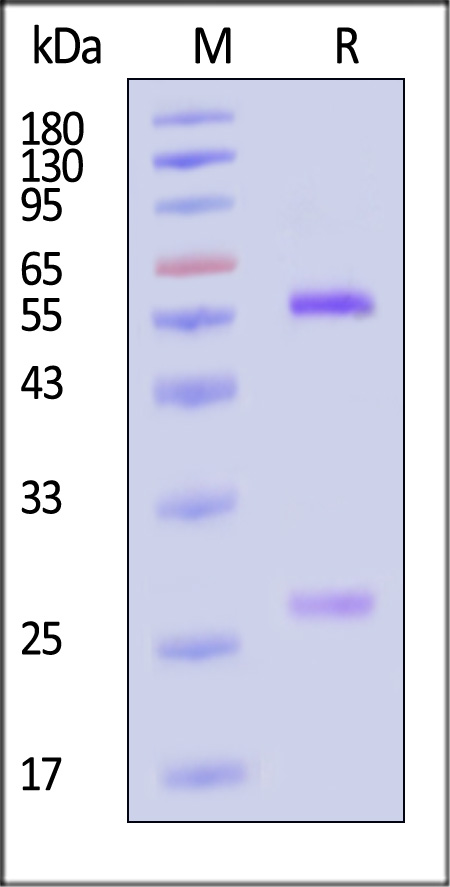
Monoclonal Anti-DENV 2(strain Thailand/16681/1984)-NS1 Antibody, Human IgG1 (7E12) on SDS-PAGE under reducing (R) condition. The gel was stained with Coomassie Blue. The purity of the protein is greater than 95% (With Star Ribbon Pre-stained Protein Marker).
SEC-MALS
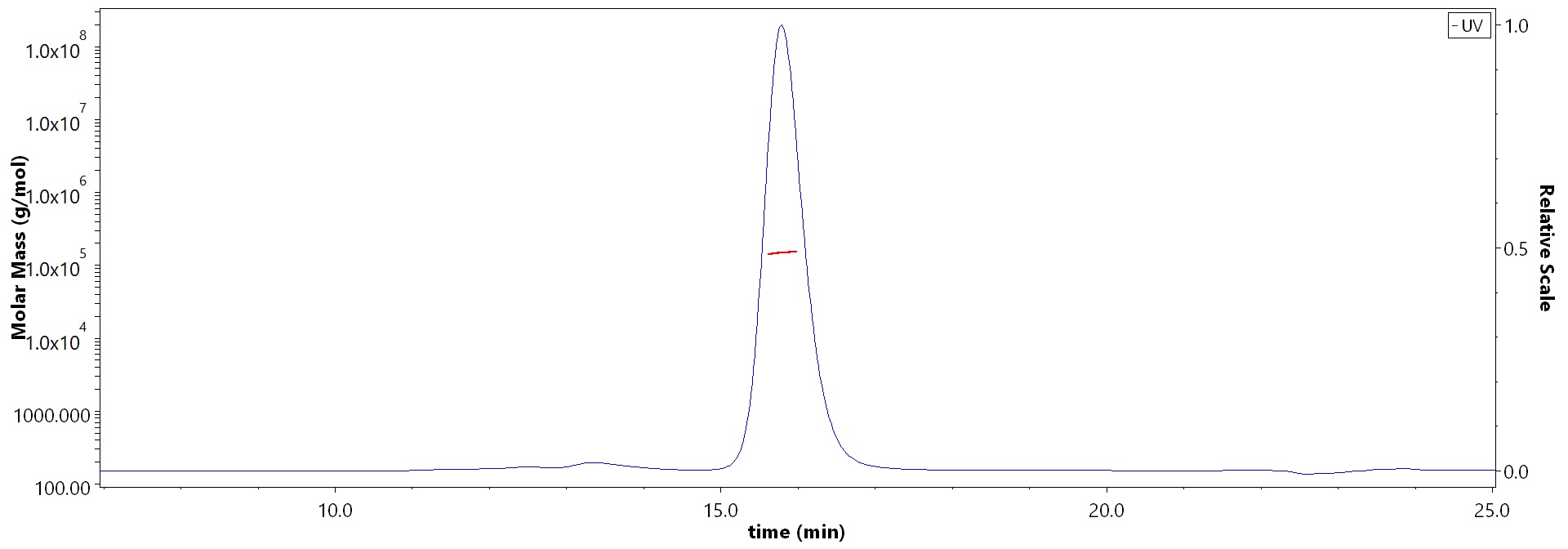
The purity of Monoclonal Anti-DENV 2(strain Thailand/16681/1984)-NS1 Antibody, Human IgG1 (7E12) (Cat. No. DE1-M756) is more than 90% and the molecular weight of this protein is around 135-165 kDa verified by SEC-MALS.
Report
活性(Bioactivity)-ELISA
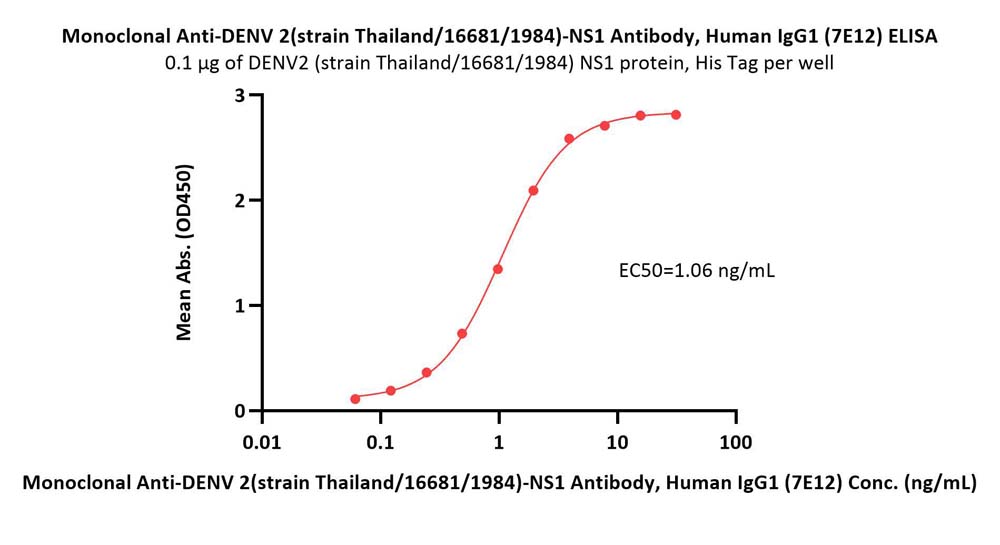
Immobilized DENV2 (strain Thailand/16681/1984) NS1 protein, His Tag (Cat. No. NS1-D52H3) at 1 μg/mL (100 μL/well) can bind Monoclonal Anti-DENV 2(strain Thailand/16681/1984)-NS1 Antibody, Human IgG1 (7E12) (Cat. No. DE1-M756) with a linear range of 0.06-2 ng/mL (QC tested).
Protocol
活性(Bioactivity)-SPR
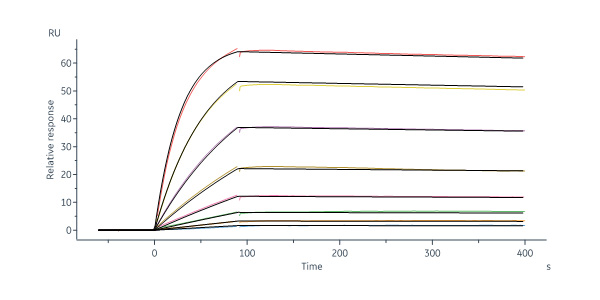
Monoclonal Anti-DENV 2(strain Thailand/16681/1984)-NS1 Antibody, Human IgG1 (7E12) (Cat. No. DE1-M756) captured on Protein A Chip can bind DENV2 (strain Thailand/16681/1984) NS1 protein, His Tag (Cat. No. NS1-D52H3) with an affinity constant of 0.167 nM as determined in a SPR assay (Biacore 8K) (Routinely tested).
Protocol
Western Blot验证
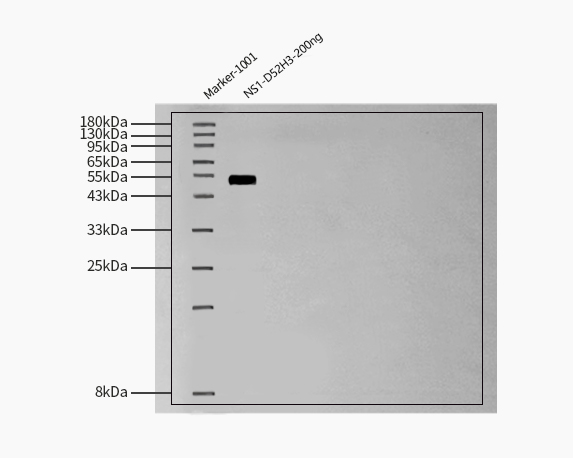
Detection of Anti-DENV 2(strain Thailand/16681/1984)-NS1-7E12,Human,Human IgG1 | Human Kappa,HEK by Western Blot. Anti-DENV 2(strain Thailand/16681/1984)-NS1-7E12,Human,Human IgG1 | Human Kappa,HEK at 1/5000 dilution + DENV2 (strain Thailand/16681/1984) NS1 protein, His Tag (MALS verified) at 200ng.
Secondary Antibody: (HFC)-HRP Goat Anti-Human IgG,Fcγ fragment specific (min X Bov,Hrs,Ms Sr Prot) at 1/2000 dilution.
Predicted band size: 45~55 kDa 12% Bis-Tris Protein Gel.
背景(Background)
Dengue is a mosquito-borne viral disease widely spread all over the world transmitted by 4 serotypes of dengue virus (DENV). The symptoms range from mild dengue fever to dengue hemorrhagic fever (DHF) and dengue shock syndrome (DSS) with high mortality. Currently, most of the studies on DENV vaccines emphasize on its envelope protein (i.e., Sanofi’s tetravalent dengue vaccine Dengvaxia). However, the fact pointing out that the vaccines with Envelope protein may could have negative effect on people never infected by DENV which makes the non-structural protein NS1 become another great target for vaccine research with its ability to avoid Antibody Dependent Enhancement.























































 膜杰作
膜杰作 Star Staining
Star Staining















